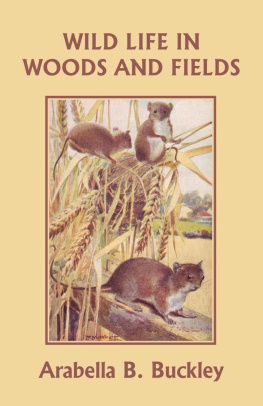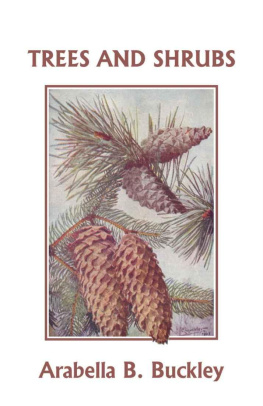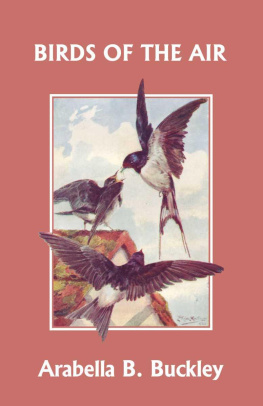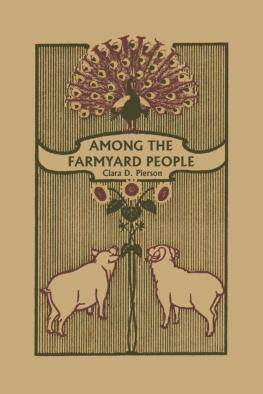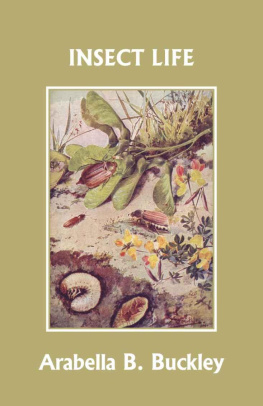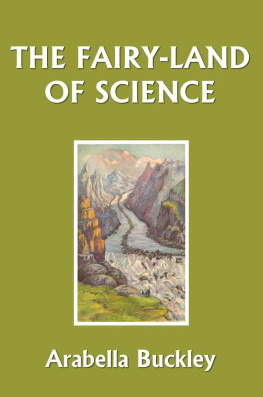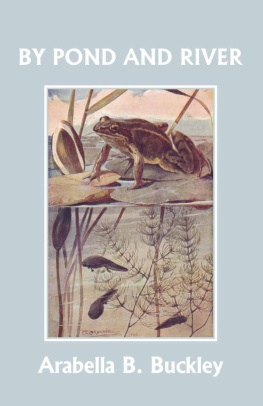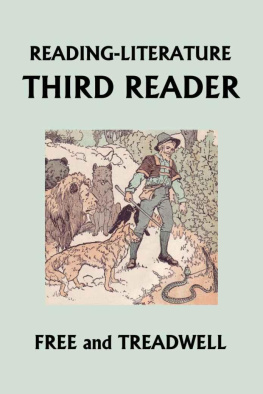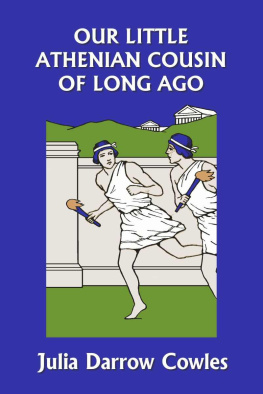Wild Life in Woods and Fields
by
Arabella B. Buckley
Yesterday's Classics
Chapel Hill, North Carolina
Cover and Arrangement 2010 Yesterday's Classics, LLC
All rights reserved. No part of this book may be reproduced or retransmitted in any form or by any means without the written permission of the publisher.
This edition, first published in 2010 by Yesterday's Classics, an imprint of Yesterday's Classics, LLC, is an unabridged republication of the work originally published by Cassell and Company, Ltd. in 1901. This title is available in a print edition (ISBN 978-1-59915-271-4).
Yesterday's Classics, LLC
PO Box 3418
Chapel Hill, NC 27515
Yesterday's Classics
Yesterday's Classics republishes classic books for children from the golden age of children's literature, the era from 1880 to 1920. Many of our titles are offered in high-quality paperback editions, with text cast in modern easy-to-read type for today's readers. The illustrations from the original volumes are included except in those few cases where the quality of the original images is too low to make their reproduction feasible. Unless specified otherwise, color illustrations in the original volumes are rendered in black and white in our print editions.
Contents
CHAPTER I
Introduction
W E three friends, Peter, Peggy and Paul, walk to school together every day. We all love flowers and animals, and each day we try to find something new.
Peter is a little boy. He can only just read. But he has sharp eyes. He sees most things in the hedges. Peggy's father is a gamekeeper. She knows the birds and where to find their nests. Paul comes from the farm. He is a big boy and will soon be a teacher.
We meet at the big pond under the elm trees. Then we walk along a narrow lane, across the common, through the wood, and over three fields to the village school.
In the pond we find all kinds of creatures. In the lane are beetles and mice, flowers and berries, birds' nests and wasps' nests. On the common the spiders spin their webs on the yellow gorse. In the ploughed field the lark hides her nest. In the grass field there are buttercups and daisies. In the cornfield there are poppies and cornflowers.
Paul is going to write down for us all we see and put it in a book.
CHAPTER II
Spiders on the Common
W HEN we cross the common on a fine summer morning we see many spiders' webs sparkling in the sun. The webs on the gorse bushes are round. They are fastened to the gorse prickles by long silk threads, and each web has spokes like a wheel. These spokes are joined together with rings of silk. There are drops of gum all over the rings. It is these drops which sparkle like diamonds, and make the web so pretty.
A GARDEN SPIDER AND BLACKBERRY BRANCH.
The spider spins a little tent in the centre of the web. In this tent she hides, till some insect flies against the gummy threads. Then she feels the web shake, and darts out to catch the fly before it breaks the threads.
We saw a little bee to-day fly right against the web on the gorse bush. Out came the spider from her tent. She bit the bee with her sharp fangs, tore off its wings, and then sat and sucked the juice out of its body.
Paul caught her, while she was busy, and showed us the two fangs with sharp points, which hang down in front of her head. Above them are her eight eyes, four large ones and four small ones. She has eight legs with such strange claws! Each one is like a comb. What do you think they are for? She uses them to guide the silk threads as she makes her web.
HEAD, LEG, CLAW AND SPINNERETS OF A SPIDER, MUCH MAGNIFIED.
We turned her on her back and saw, under her body, six little pockets, out of which she pulls the silk. It comes out through tiny holes. She draws it through the combs on her legs, and so makes her web as she runs along.
Besides the webs on the gorse, there are webs all over the common close to the ground. These are not made with spokes like the round webs. The threads are mixed up like wool. For a long time we could not find the spider. At last one day Paul said, "Here is a hole right in the middle of the web. It goes down into the ground."
This hole was lined with silk threads. Just then a beetle crawled on the web, and shook it. At once the spider darted out from the tunnel in the ground and seized the beetle. She was so quick that she had carried him down into her hole before we could catch her.
There are many spiders on the common which do not spin webs, though they hang from a thread. They spring on the flies and beetles on the ground and are called "hunting-spiders."
The mother hunting-spiders carry their eggs about with them in a round bag. Peter caught one of these as she was running along with this white ball under her body. He took the ball away and put it on the ground. When he let her go, she ran up and seized it. He took it away three times. Each time she caught it up again, and at last ran away before we could catch her.
HUNTING SPIDER WITH HER EGG-BAG.
CHAPTER III
The Woodpecker's Nest
W E were lying under the shade of the trees in the wood one afternoon. All was very quiet, when suddenly we heard such a strange cry. It was like someone laughing "Yaffil, Yaffil, Yaffil." "That is the woodpecker," said Peggy. "Wait and see what he will do."
So we lay quite still under the tree. Soon the sound came nearer, and a great heavy bird, bigger than a large thrush, flew towards us. He was a beautiful bird. His wings were green, and so was his breast. He had yellow on his tail. His head was red, and he had a red streak on his throat. His beak was long and grey.
WOODPECKERS: OLD COCK BIRD, BELOW; YOUNG FULLY-FLEDGED BIRD, ABOVE.
He came quite close to us, hopping along. Then he stopped, and a long shining tongue came out of his mouth, and went back so quickly that we could scarcely see it.
"He is eating ants," said Peggy. "The tip of his tongue is sticky and he draws them into his mouth."
Then he began to climb the tree so funnily. His tail is quite stiff and wiry, and he bent it against the tree, and pushed himself up, jump, jump, holding on with his sharp hooked toes. He jumped first to the right, then to the left. Then he ran round the tree and came out on the other side.
All the while he was trying the bark with his beak. Tap, tap, tap. At last he found a soft spot. Then he tore off the bark and ate the grubs, which had made the tree rotten in that place. After this he came down the tree again.
It was so funny to see him. He came down backwards tail first, using it to steady himself. Then he spread his wings and flew slowly away.
We crept after him, and by-and-by he stopped at an old elm tree and flew round it. Then we could see no more of him.
"His nest must be in this tree," said Peter. "Give me a back, Paul, and I will soon find it."

